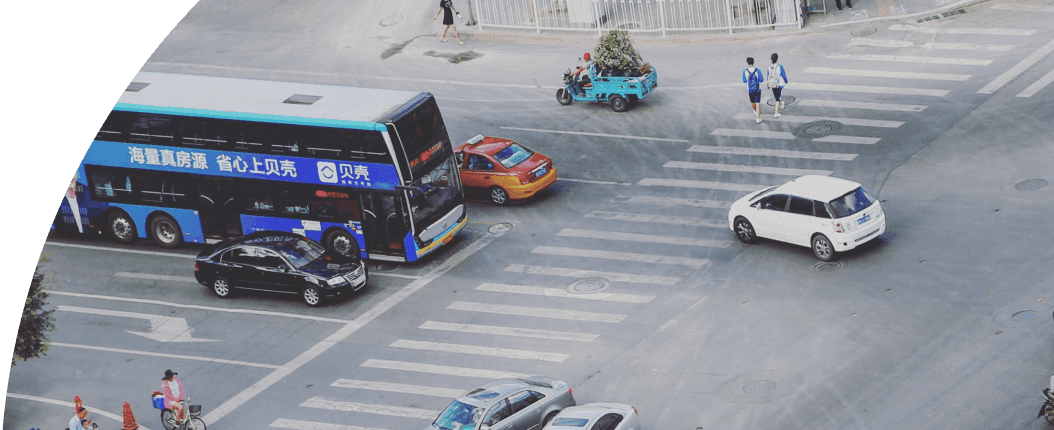
News
By State Smart Transportation Initiative, August 9, 2017

Public transit battles the “Uber effect”, cities implement new technologies to reduce bus travel times, and high-quality investments in buses are paying off. (Photo credit: wyliepoon via Flickr)
Florida takes steps to lower speeds to reduce crashes; will other states follow?
Echoing recent recommendations from the NTSB about the role of speeding in traffic fatalities, the Florida Department of Transportation plans to revise road designs to lower speed limits from 40-45 mph to 25 mph in an effort to improve roadway safety. The initiative puts FDOT ahead as one of the first states to tackle head-on the safety impacts of vehicle speeds; a pilot program will kick off in the Tampa Bay Region. Speed is one of the most significant factors in roadway crashes and fatalities in the U.S., and an especially serious problem for pedestrians and bicyclists. More >>
New life for greenhouse gas performance measure
In the waning days of the Obama administration, the Federal Highway Administration finalized the last set of performance measures that required states and MPOs to track greenhouse gas (GHG) emissions related to the National Highway System. However, the incoming Trump administration delayed the rule’s February start date, then delayed the GHG provision indefinitely. Now environmental groups are suing the Trump administration to reinstate requirements to measure transportation-related GHG emissions. More >>
Carless renters shoulder $440 million annually in parking costs
Unused garage parking costs the average carless renter an extra $621 per year, or 13 percent of a housing unit’s rent, according to a new study from researchers at UCLA. The deadweight cost amounts to $440 million in annual losses across over 700,000 households, with the heaviest burdens often falling on the lowest-income households, who may be paying for parking they do not need or want. SSTI offers useful resources to help developers and cities build and manage parking more efficiently. More >>
What’s going on with buses?
- Public transit battles the “Uber effect”
After enjoying a surge in the early- to mid-2000s, bus ridership has been falling in recent years. Part of that decline can be traced to the rise of Uber anad other ride-hailing apps that are offering more convenient and timely services. Philadelphia’s SEPTA has commissioned a study to rework its routes to better serve ridership needs and expand geographic coverage. More >> - Reduce bus travel times, increase ridership
Efficiency in all aspects of the transit network is critical if transportation agencies want to encourage increased transit use. New York City is trying to improve the efficiency of its bus service by implementing transit signal priority, a system that coordinates buses with traffic signals to limit the time buses are stopped at traffic lights. More >> - High-quality investments in buses are paying off
A new study finds that bus rapid transit (BRT) lines can stimulate economic activity even in smaller cities such as Eugene, OR. Researchers examined the Emerald Express BRT line and found improved property values and livability of the surrounding communities. More >>
SSTI resources & announcements
Understanding trip-making with big data
A new resource from SSTI helps decision-makers get started with using big data to better understand travel patterns. Access an overview of trip-making data from cellphones, mobile apps, and in-vehicle GPS devices. The new brief builds on our Connecting Sacramento work by providing example applications and lessons learned from those studies, along with those from past research in Colorado and Virginia. More >>
Don’t forget to register for our September webinar on accessibility
Advancements in measuring bicycle and pedestrian accessibility
Tuesday, September 12, 2017 at 3:00-4:00 pm EDT
DOTs are making advancements in measuring destination accessibility for automobiles and transit, but are struggling to keep pace for bicycle and pedestrian travel. People on bike and on foot are much more sensitive to the types of facilities available, exposure to nearby factors, and other external factors. These added complexities can often result in data deficiencies.
Join SSTI for a live discussion on ways to overcome these challenges and put measures to use. Jennifer Boldry from People For Bikes and Spencer Gardner from Toole Design Group will discuss their new open source Bike Network Accessibility tool, and Chris McCahill from SSTI will show how pedestrian accessibility measures have been applied in Sacramento, CA, Madison, WI, and Virginia. Register today >>
Miss our July webinar on parking demand? Watch the recording
“Parking counts – understanding demand in cities”
Many cities and towns recognize that their parking requirements and regulations are outdated, but they struggle to take the first step toward reform. This process often begins by auditing the existing supply and understanding how it’s being used, which can be a major undertaking. On July 12, we hosted a webinar to share lessons from two recent parking demand studies and offers guidance on conducting similar studies more efficiently. Watch the recording >>
In case you missed it
- Connecting Sacramento: A new study on trip-making and accessibility
- Who pays for roads? A state-by-state look
- The hidden costs of parking
- Real-time travel information: better for businesses, better for travelers
- What HOV requirements in Jakarta can teach us about congestion
- Cleaning up the commercial diesel truck industry
Related News

© 2025 Smart Growth America. All rights reserved
Site By3Lane Marketing








